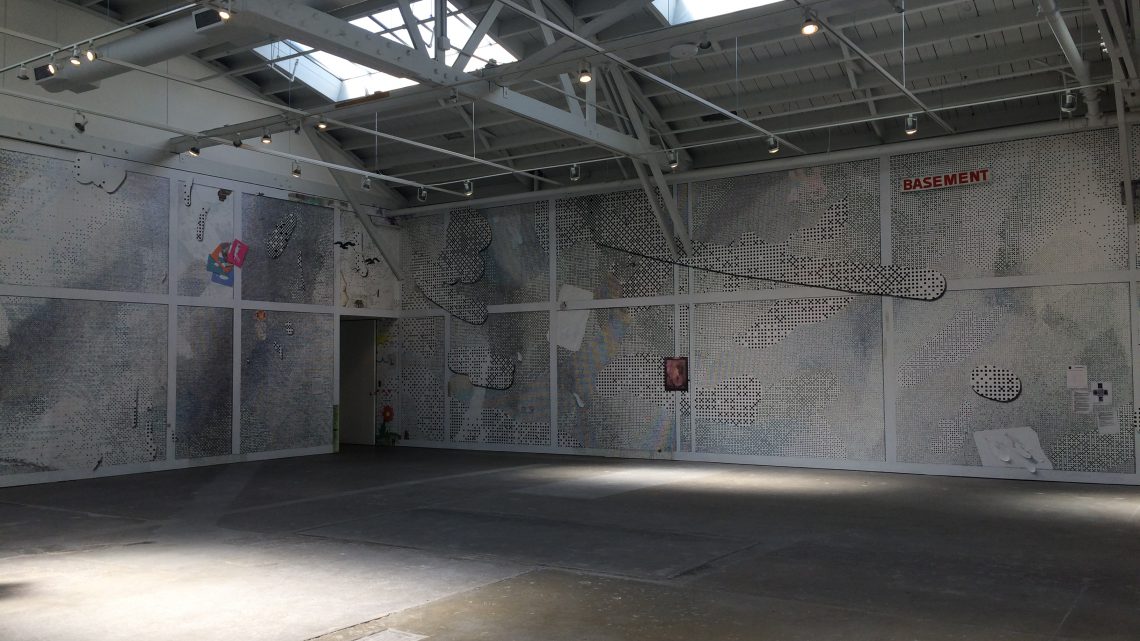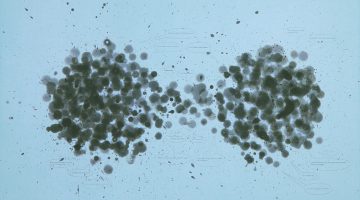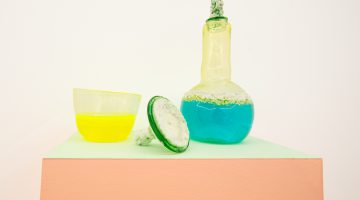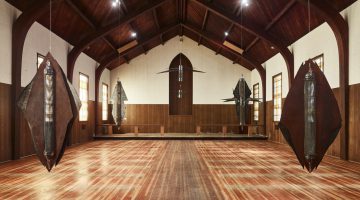Laura Owens: Ten Paintings
CCA Wattis Institute
Kent and Vicki Logan Galleries
360 Kansas Street San Francisco, CA 94103
April 28 – July 23, 2016
Laura Owens’s Ten Paintings—her first solo institutional show in the US since 2004—occupies both of the gallery spaces at The Wattis Institute with a multi-media exhibition that asks viewers to consider the imperceptible or undisclosed elements behind her work, both literally and figuratively. In the larger front gallery, Owens does not disappoint with her technical bravado: a dizzying wall-to-wall installation of non-repeating wallpaper panels and interactive sound pieces, for a start. From a distance, the wallpaper forms a unified, mural-like image that distorts the viewer’s perception of the space—like being inside a pixelated cloud—with larger brushmark shapes floating around the gallery, intersected by trompe l’oeil wood beams. However, viewing the walls up close, one is confronted with seemingly endless details of bitmap patterns layered with graphite drawings, sand flocking, glitter, oil paint, and collaged works on paper.
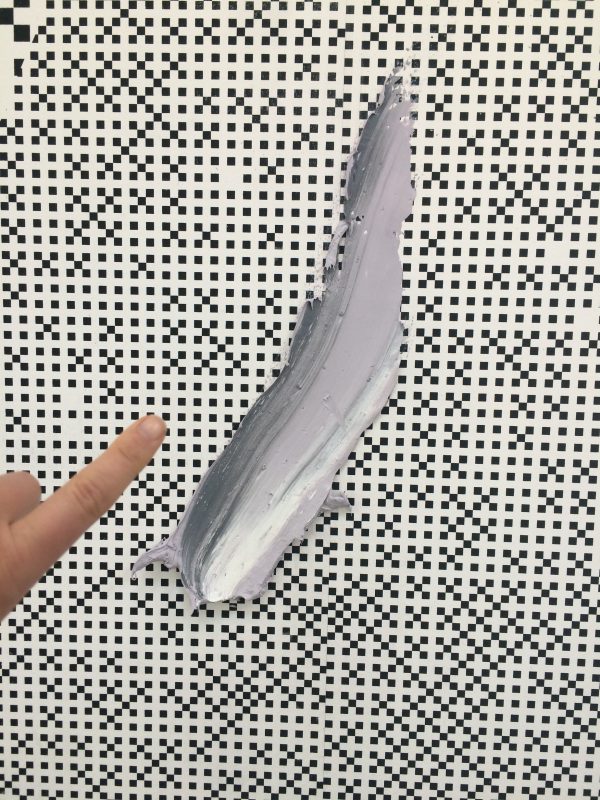
Finger for scale. Photo by Sarah Thibault
If we are to consider the brush stroke the way that Owens does in her vocabulary, we must examine it as a multi-faceted entity with a prismatic history complicated by the person behind the brush. The brush stroke is foundational to all forms of mark-making and inextricable from the human hand. It is this history and its translation into digital tools that obsesses Owens. Almost as a way to crowd out or hide the ‘touch of the artist’, her paintings avoid the singular voice of modernist painting by embracing all painterly techniques equally. As it says in the exhibition brochure, she picks all the battles “and plays both sides,” from dry brushed marks to impasto palette knife formations to the printed Photoshop ‘brushstroke’ with drop shadow, and back again.
Ten Paintings is a challenging exhibition to write about, in part because of the many facets of the work that are made purposefully imperceptible to the uninitiated viewer. Even after getting a quick press tutorial from Wattis staff about the existence of interactive sound pieces and a hint that there were 10 paintings hidden within the walls of the gallery, I soon found there was much yet to be discovered, and clarified. The hide-and-seek game Owens plays with the viewer is an exciting aspect of the exhibition. It allows the viewer to discover and interact with the work at their own pace, based on their own interest.
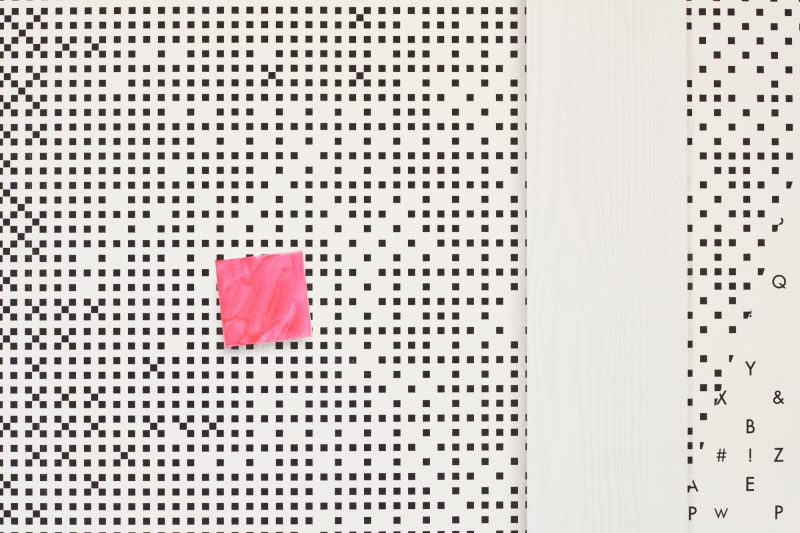
Laura Owens, Untitled, 2016 (detail of installation). Acrylic, oil, Flashe, silkscreen inks, charcoal, pastel pencil, graphite, and sand on wallpaper; courtesy the artist and Gavin Brown’s enterprise, New York / Sadie Coles HQ, London / Galerie Gisela Capitain, Cologne; © Laura Owens; photo: Johnna Arnold
However, it wasn’t clear how little information was being given, or more specifically, how much was being withheld about the show until I was accidentally privy to a second-hand tour of it given to SF Chronicle writer Charles Desmarais. Previous attempts to get information resulting in me receiving a copy of the exhibition brochure, a creative piece of writing about the show by Curator Anthony Huberman that says little in the way of logistics. During the walk-through, which Desmarais references in his review of the show, Huberman explained in detail the nature of the ‘10 paintings,’ and offered some keywords that set off special pre-recorded responses (both of which I will return to in a moment.) While I felt lucky to be ‘in’ on this special information, I was upset that I was not invited to be part of this informational tour as I had introduced myself to the gallery attendants and staff as press not five minutes earlier, looking for images and more information about the show. After years of experiencing art world slights as a matter of course, I all but internalized this exclusion as a natural part of the art world pecking order. But, as Desmarais points out, this selective access to information and art in general equally impacts the community of CCA alumni, artists, and art goers who are more often not full-time arts writers or wealthy patrons but who are the supposed beneficiaries of the institution’s relationship to the California College of the Arts.
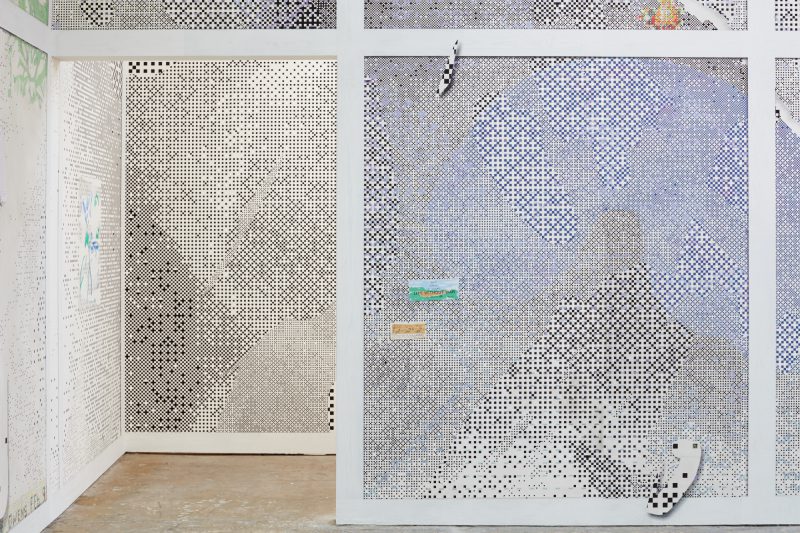
Laura Owens, Untitled, 2016 (view of installation). Acrylic, oil, Flashe, silkscreen inks, charcoal, pastel pencil, graphite, and sand on wallpaper; courtesy the artist and Gavin Brown’s enterprise, New York / Sadie Coles HQ, London / Galerie Gisela Capitain, Cologne; © Laura Owens; photo: Johnna Arnold
Now, back to the artwork. In brief, the title Ten Paintings refers to ten, 9’x7’ aluminum sheets installed as part of the wall supports and concealed behind the wallpapered mural. Once the exhibition is over, the works will be cut out and potentially shown in a separate exhibition or sold off. Whatever the case, the title moves these yet unrealized paintings to the foreground of the show where they serve to highlight the invisible labor and other unseen conditions that contribute to the artwork: time spent in the artist’s studio both past and present, the work of countless studio assistants, years of schooling and looking at art and ideas scrapped or not yet conceived.
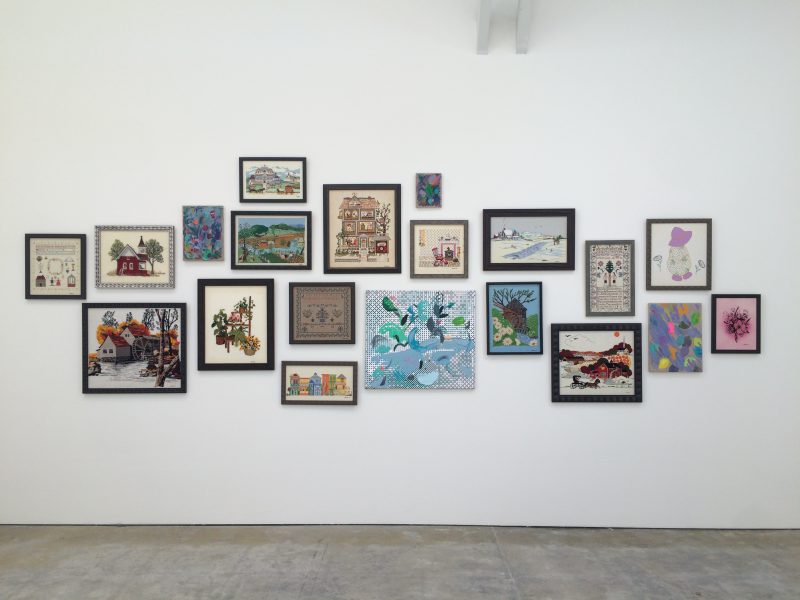
View of Eileen Owens’ installation at CCA Wattis Institute, 2016.
In the back gallery, Laura Owens curates her grandmother, Eileen Owens, where 16 needlepoint pieces are shown in tandem with some of her smaller “paintings of paintings.” The dialogue between the works and across the generations reveals one of of the conditions for the younger Owens’s development, assuming they were a prevalent part of her upbringing, particularly the needlepoint of houseplants where the leaves of the fern come off the fabric in curlicues, a referent to her own impasto mark-making. This pairing also drives home the visual correlation between the needlepoint pattern grids and the Photoshop bitmap that has been a part of Owens’s painterly vocabulary for years. Only once I had been in the back gallery did I notice that much of the front room’s imagery included references to needlepoint forms and patterns.
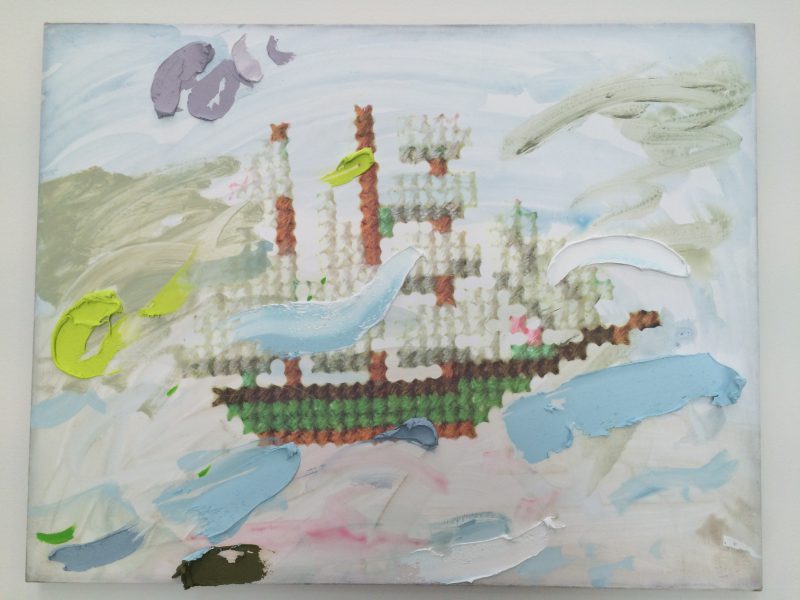
Like cookies on a website, 10 interactive sound pieces are hidden around the mural. Their placement is meant to alert the viewer as to the location of the 10 paintings. Phone numbers embedded in collaged classified ads from the Berkeley Barb or written on the wall like bathroom graffiti invite the visitor to text with a question or a comment. While most phrases trigger one of the many random sequences like ‘sup’ or slapstick cartoon noises, a few trigger specific interactions. SPOILER: I found that texting “thank you” to one of them brought on a 10 minute serenade by Gregorian monks— a transcendent reward for me (living hell for the gallery attendants).
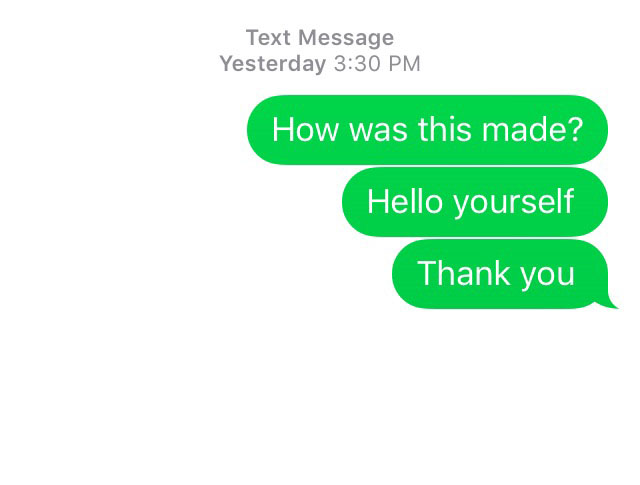

Prompted to text a question, things devolve quickly. SPOILER: Texting “Where are the paintings?” triggers sounds from all 10 paintings at once.
In the exhibition text, Owens is said to have been inspired by spam emails to carry on correspondences with the spambots. With this arrangement, she essentially invites visitors to do the same. Texting the wall, which is what it felt like after the first few times, was fun. I was surprised more people weren’t engaged in finding the hidden sound goodies while I was there. I would love to see a list of the audience’s texts from the exhibition. If the Internet has taught us anything, it’s that people communicating anonymously across digital mediums can’t keep it PG-rated. After my first text, I had a moment of disappointment that the response to my text wasn’t a customized response to my question coming from an artworld version of Siri: a sign that I have been in San Francisco too long.
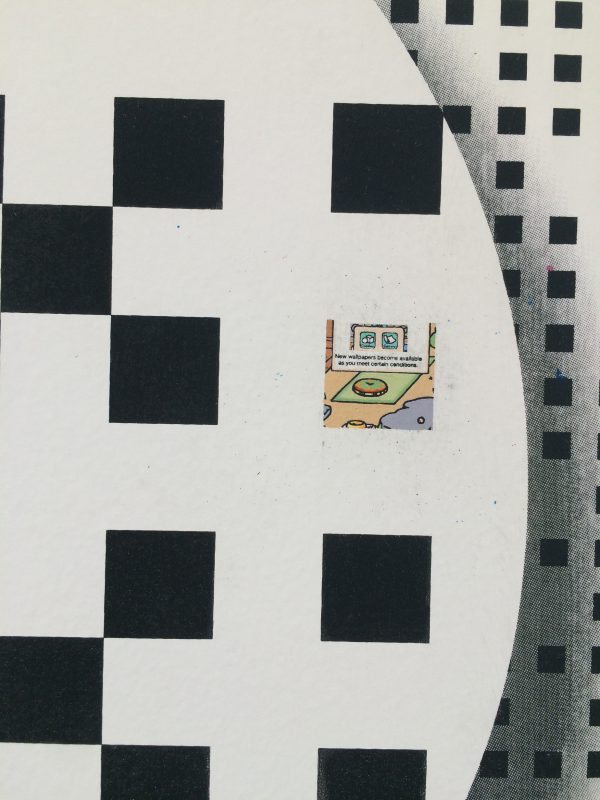
Tiny cartoon reads “New wallpaper will become available as you meet certain conditions”
Even if you have in your resources all the information meant for a high-valued Wattis visitor, Ten Paintings is a lot to take in. It is best to see the show by yourself and allow time for your eyes and mind to wander. There are surprises yet to be found.
